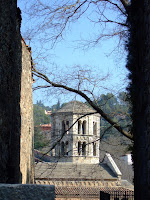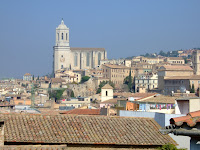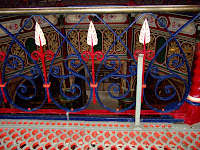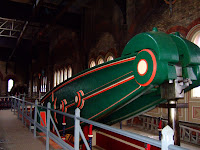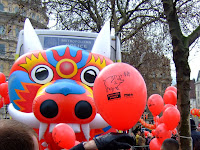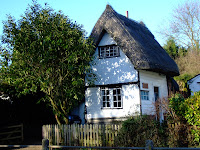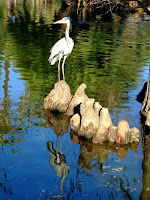 Our final day in Barcelona was a bit of a missed opportunity as we mis-read flight times and consequently arrived at the airport 2 hours before we needed to. We could have used the extra time in the afternoon to take a guided tour around the Palau de la Musica. Alas, we may never have that pleasure.
Our final day in Barcelona was a bit of a missed opportunity as we mis-read flight times and consequently arrived at the airport 2 hours before we needed to. We could have used the extra time in the afternoon to take a guided tour around the Palau de la Musica. Alas, we may never have that pleasure.Nevertheless, it was another cloudless day so we ventured over to the area of the city that was
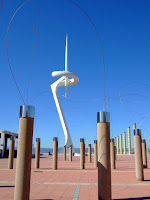 redeveloped for the 1992 Olympic Games. Nearby is a ‘village’ that was created as a show place for different Spanish architecture for the 1929 Universal Exposition. It is a tourist trap with many little artisans and craftsmen selling their wares direct from their workshops. It also includes a gallery of modern art, so we could tick off a bit of culture and admire the works by Picasso and others.
redeveloped for the 1992 Olympic Games. Nearby is a ‘village’ that was created as a show place for different Spanish architecture for the 1929 Universal Exposition. It is a tourist trap with many little artisans and craftsmen selling their wares direct from their workshops. It also includes a gallery of modern art, so we could tick off a bit of culture and admire the works by Picasso and others.
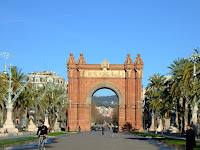
We wandered through the park close to the Hotel and looked at the Arc de Triomf and still had time to browse a couple of the markets and stroll La Rambla once again before we made our premature departure.
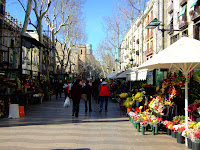

Back at Luton, we collected our car at 1 a.m. and found that attempts to access the M1 southbound at Junctions 10 and 9 were blocked by roadworks, with no prior warning signs and no suggestions as to alternatives. We wondered how a newly arrived traveller, having just collected a rental car would get on.








